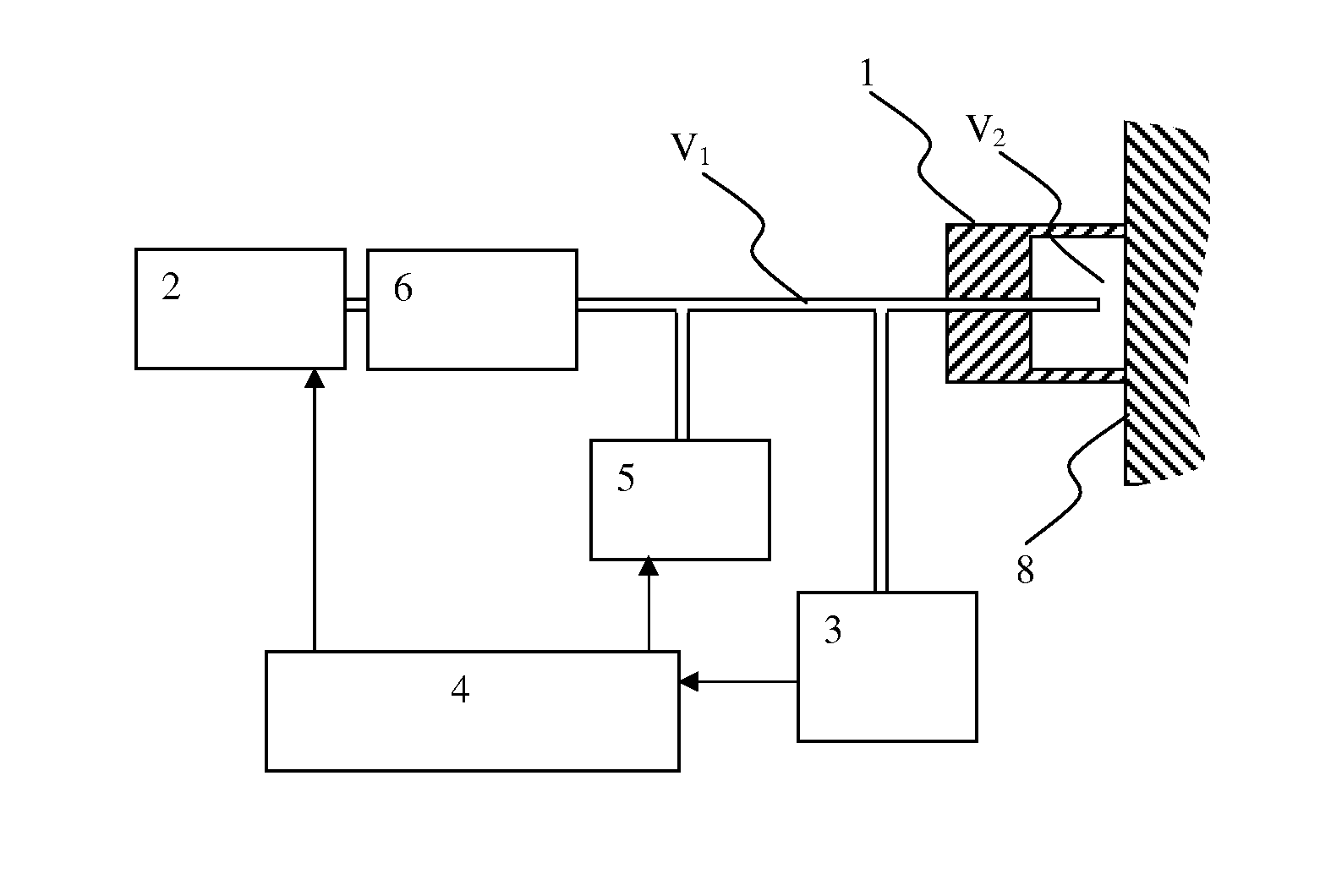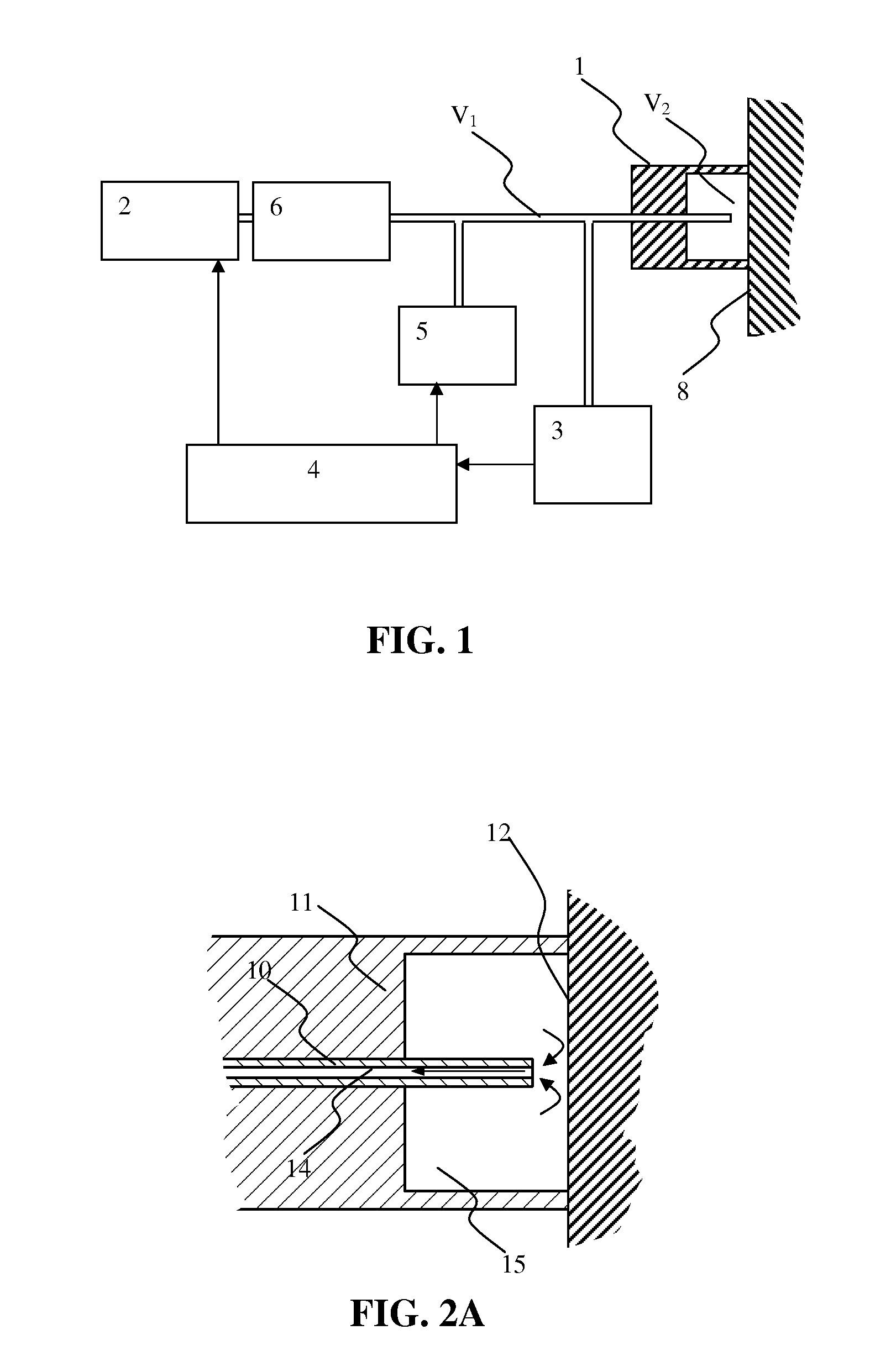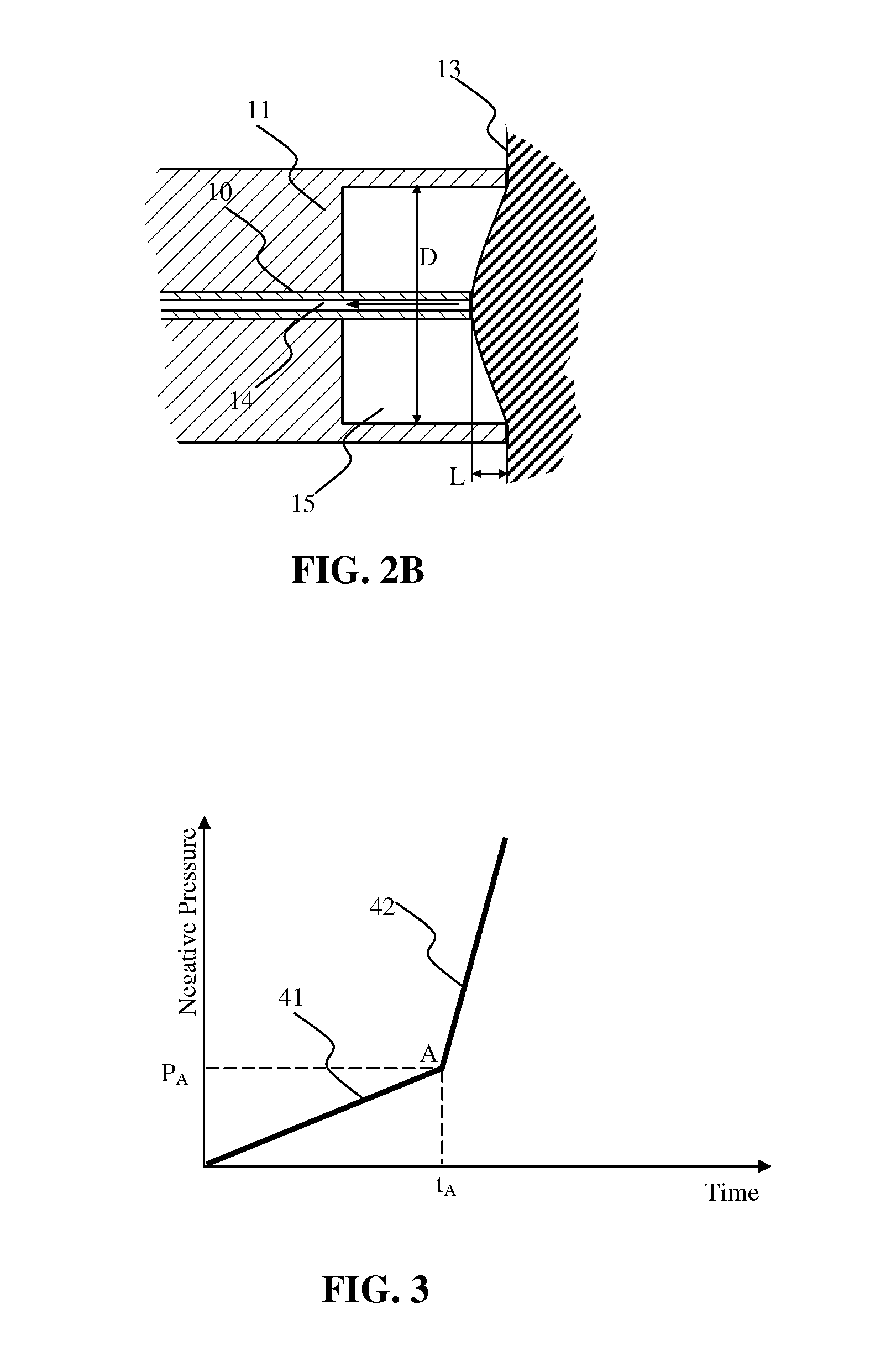Aspiration methods and devices for assessment of viscoelastic properties of soft tissues
a viscoelastic and soft tissue technology, applied in the field of viscoelastic properties assessment methods and devices, can solve the problems of perinatal morbidity and mortality, subjective and inaccurate conventional tests, and premature babies at increased risk of newborn health complications
- Summary
- Abstract
- Description
- Claims
- Application Information
AI Technical Summary
Benefits of technology
Problems solved by technology
Method used
Image
Examples
Embodiment Construction
[0042]A detailed description of the present invention follows with reference to accompanying drawings in which like elements are indicated by like reference letters and numerals. FIG. 1 illustrates a block diagram of the device of the invention. Arrows indicate electrical connections, while double lines indicate pneumatic connections. The device consists primarily of four basic components: a specially designed probe tip 1, a vacuum pump 2, a pressure sensor 3, and an electronic unit 4 for data acquisition, calculation and displaying the measurement results. An optional vent valve 5 is used to quickly release vacuum from the measuring cavity of the probe: it is closed when the measurement starts, and is opened to vent the cavity to atmosphere when the measurement is complete. A capillary restrictor 6 can be used for adjusting the rate of aspiration. The combined internal volume of all internal connection tubes, primarily internal volume 14 of tube 10 is assigned a value V1. The open ...
PUM
 Login to View More
Login to View More Abstract
Description
Claims
Application Information
 Login to View More
Login to View More - R&D
- Intellectual Property
- Life Sciences
- Materials
- Tech Scout
- Unparalleled Data Quality
- Higher Quality Content
- 60% Fewer Hallucinations
Browse by: Latest US Patents, China's latest patents, Technical Efficacy Thesaurus, Application Domain, Technology Topic, Popular Technical Reports.
© 2025 PatSnap. All rights reserved.Legal|Privacy policy|Modern Slavery Act Transparency Statement|Sitemap|About US| Contact US: help@patsnap.com



